It's a bright sunny day, so what's better than sitting outside to draw an exquisite landscape while listening to the birds chirping?
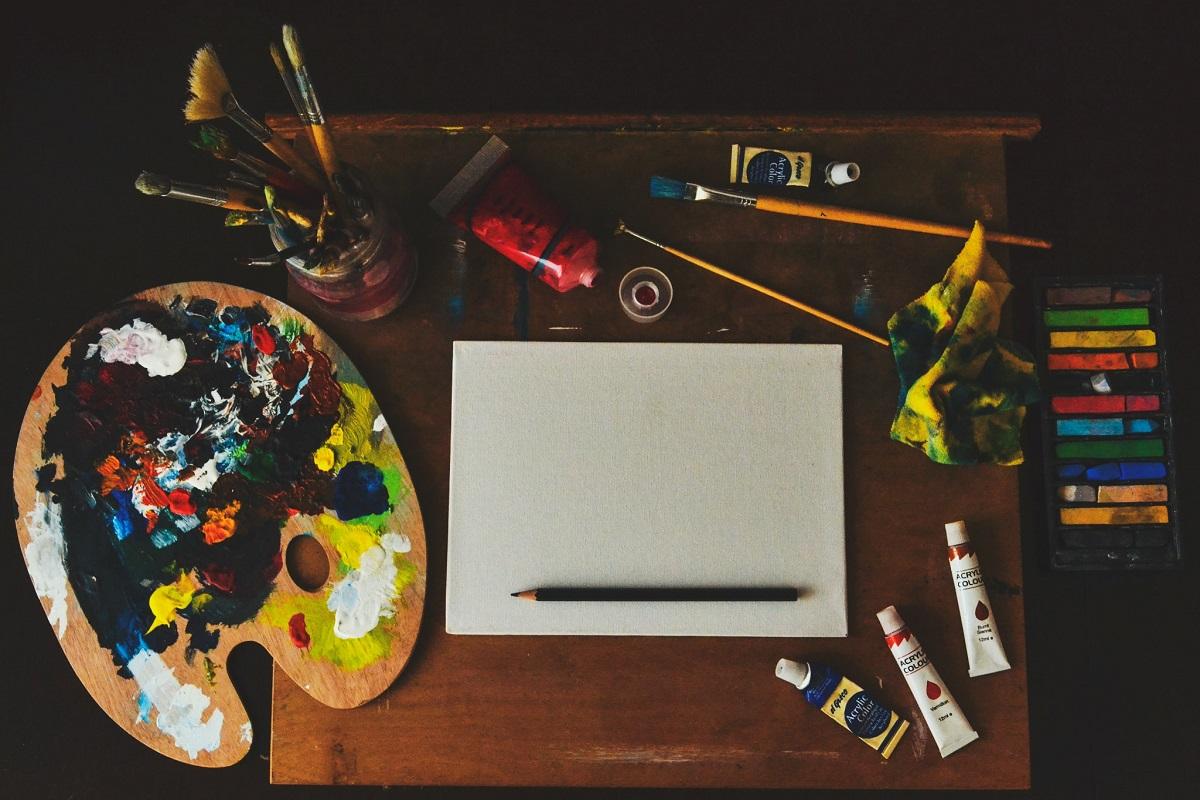
You take your canvas, brush, easel, and your fine grade acrylic paints outside and apply the basic shades. But the moment you start blending the colors, you shockingly find that the paint has already dried.
No wonder there, as several factors determine how acrylic paints behave, and the final finish on the canvas. You can learn how to varnish acrylic painting to get a smoother surface rather than a dried one. It’s also worth noting that acrylic paint can be used on metals and numerous other materials so the base you paint on heavily influences the paint's quick drying properties. If you plan to create custom graphics on your old bike or simply want to beautify your garden gate do note drying times and paint behavior will change. If you didn't know about this earlier, today's guide explains everything on how long do acrylic paints take to dry.
FUN FACT | Did you know starting with oil is much tougher than with acrylic while painting?
If you are keen to know how to start with oil paints, we have an excellent article on oil paints to curb your interest.
So, without further ado, lets begin!
How Long Does It Take For Acrylic Paint To Dry?
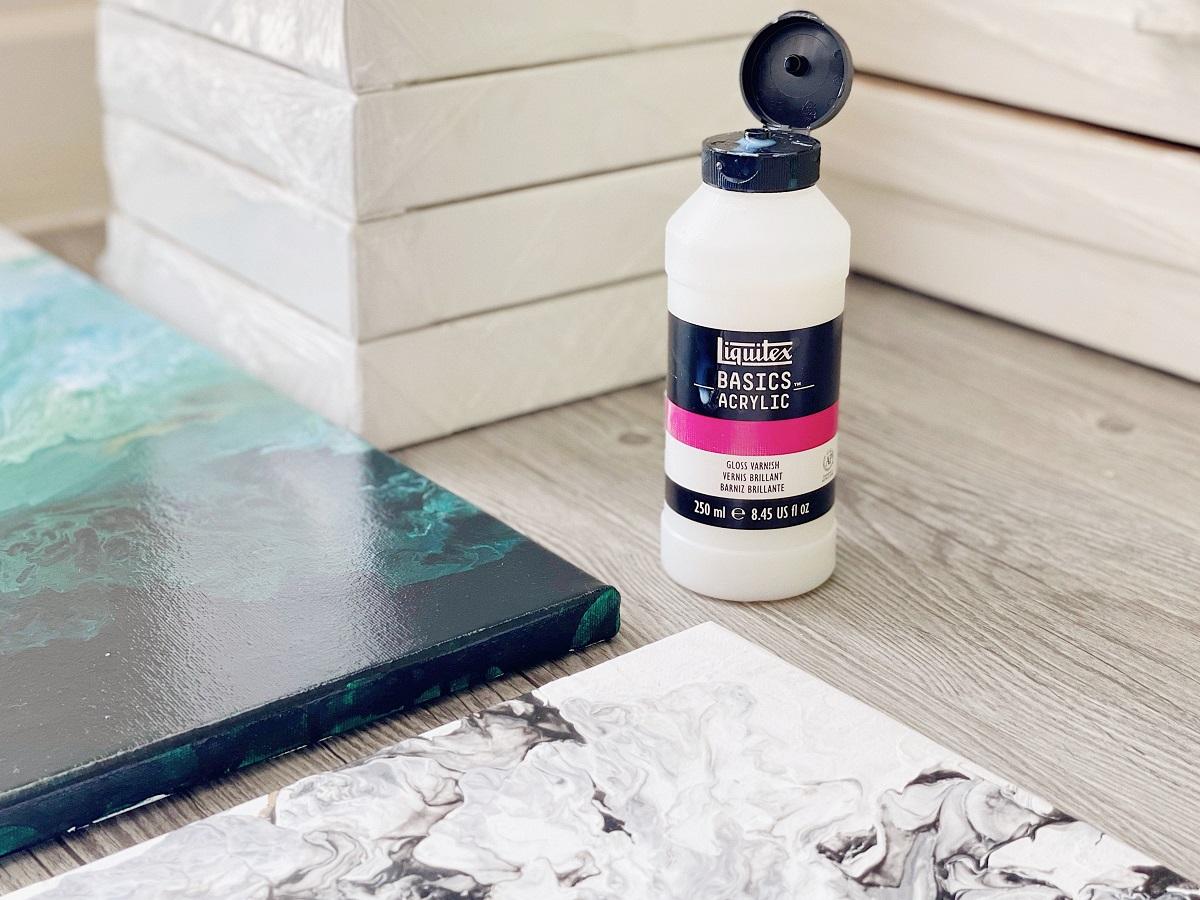
Although acrylic paint dries faster than other types of paint, as we mentioned above the drying time depends on several factors, including the brand and composition of the paint. To determine how long it will take for an acrylic painting to be ready, you need to consider the following points:
- Brand value
- Thickness
- Humidity
- Air circulation
- Temperature
- Paint type
- Surface material
- Painting technique
Usually, fast-drying acrylic paint dries between 20 and 30 minutes, while some brands dry to touch even sooner, within 10-20 minutes. But if you want to let the acrylic painting rest, it would be best to use slow-drying acrylic paint as it remains wet far longer. This proves useful for painters who want to achieve a smooth finish with soft edges.
Professional acrylic painters often add retarders to the color before painting to increase drying time for more flexibility while working. But even more important is the curing time because it affects the finish if the paint doesn't cure well.
Based on the number of layers and their thickness, it could take anywhere between a few days and a couple of weeks for the painting to be ready.
Is Acrylic Paint Drying Time Different For Various Brands?
We mentioned that one of the key factors that impact the drying process of acrylic paints is the type of the brand. To help you, we have narrowed down the top brands and mentioned their drying time.
1. Golden
It has two types of acrylic paint - Golden open acrylics and heavy-body paints. The latter takes 30 minutes to dry to touch, while the Golden artist colors in open acrylics have a lockdown period of over 3 days.
2. Arteza
Arteza is known for its artist-quality and fast-drying acrylic paints that dry between 15 and 60 minutes.
3. Atelier Interactive
This brand uses a unique unlocking formula to ensure that it takes 20 minutes on average for the acrylic paint to dry.
4. Daler-Rowney
It uses Cryla Artists' acrylic fast-drying paints and offers one of the fastest drying times on the market: 5-10 minutes.
5. Grumbacher
If you're new to acrylic paintings, you're better off starting with student-grade paints from this brand that dry within 3-5 days.
6. Utrecht
Another fast-drying acrylic paint brand is Utrecht, but it depends on the thickness of the paint layers. Thin layers will dry within 10-20 minutes, but thick layers will take longer, about an hour to 3 days.
7. Holbein Acrylic
If you're looking for professional-grade heavy body paints, try Holbein Acrylic's products as they dry in 20-30 minutes.
8. Tri-Art
Tri-Art is one of the top brands for fast-drying paints, provided you use a thin layer, which can dry in 5 minutes. But when you need to apply thicker layers, it will take several hours for the painting to dry.
9. Blick Studio
Blick Studio manufactures professional-grade products so that your preferred acrylic paint dries faster in 20-30 minutes. But applying thick layers can increase the drying time by a couple of hours.
10. Sennelier
This brand produces fast-drying paints with thin layers taking 10-20 minutes and thick layers taking 1 hour or several days to dry.
11. Winsor & Newton
Consumers looking for professional acrylic paint will love what Winsor & Newton offers. You can expect the thin layers to dry under 30 minutes, but slightly thicker layers will take 1-2 hours. It also has another variant, the Galeria Acrylic fast-drying paint, which can dry in 10-20 minutes when the layers are thin and 1 hour when you're using heavier shades.
12. Matisse
To make acrylic paint dry faster, it would help if you apply a thin layer of Matisse's products that are set in 10-20 minutes. A thick layer takes longer, roughly around 1 hour to several days.
13. Amsterdam
No, we aren't talking about the popular holiday destination (forgive us for this bad joke). But Amsterdam is a popular brand with fast-drying paints that are set in 10-20 minutes. And if you apply thicker layers, it may take upto several days.
14. Maimeri
Maimeri offers results similar to Amsterdam, with thin layers drying under 20 minutes while thicker films take several days to set completely.
15. Castle Art Supplies
One of the most well-known brands among artists is Castle Art Supplies, and it has fast-drying acrylic paints that require 10-20 minutes to dry. But an extra layer of paint will take between 1 hour and 3 days to set.
16. M Graham Acrylic
These paints don't take more than 30 minutes to dry, which makes them suitable when you're facing a time crunch.
17. Liquitex
Liquitex produces fast-drying paints with thin layers drying in 10-20 minutes and thick layers taking longer, around 1 hour to a few days.
18. Crafts 4 All
Consumers who don't mind fast-drying paints should opt for paint colors from this brand that are set within 10-20 minutes.
From the above list, it's clear that acrylics dry to touch quickly, so your painting should be ready without much hassle. Professional painters even know about certain tricks to increase or decrease the drying time.
Before we delve into this in greater detail, let us discuss an open secret involving retarders. They help prolong the drying process, something Golden has used in its Open Acrylics paint line so that its paints stay wet for at least 24 hours.
On the flip side, you'll have to compromise on the opacity when using retarders because they dilute the pigments in the paint. Most people choose heavy body acrylics for this reason, as they retain their vibrancy despite the presence of retarders.
What's The Difference Between Fully Cured And Drying To Touch
When working with an acrylic gel or paint, you'll often hear the terms curing and drying to touch, so what do they mean? To understand this, you should know how acrylic paints dry, which usually happens when the water-based formula in the paint evaporates to leave behind a thin but solid paint film.
As a rule, acrylic paint dries to touch faster but takes longer to cure. Sometimes paints that dry to touch could still be in the middle of the drying process, so you should be careful to prevent damage. Otherwise, you might accidentally remove the top paint layer.
And due to the presence of retarders in slow-drying acrylics, you might have to wait for a month to varnish or seal the paint. This 30-day period is the curing phase.
If you refer to the drying time of the different brands that we have mentioned, it corresponds to the time it takes for them to dry to touch. It's generally between 10 and 30 minutes, while it takes upto a day for them to fully cure.
There are different parts of acrylic paint that you should know about:
- Pigments give the paint color
- A polymer binder that guarantees waterproof, glossy, and even finishes
- Water combines with the binder to create a thin film
- Additional agents for durability
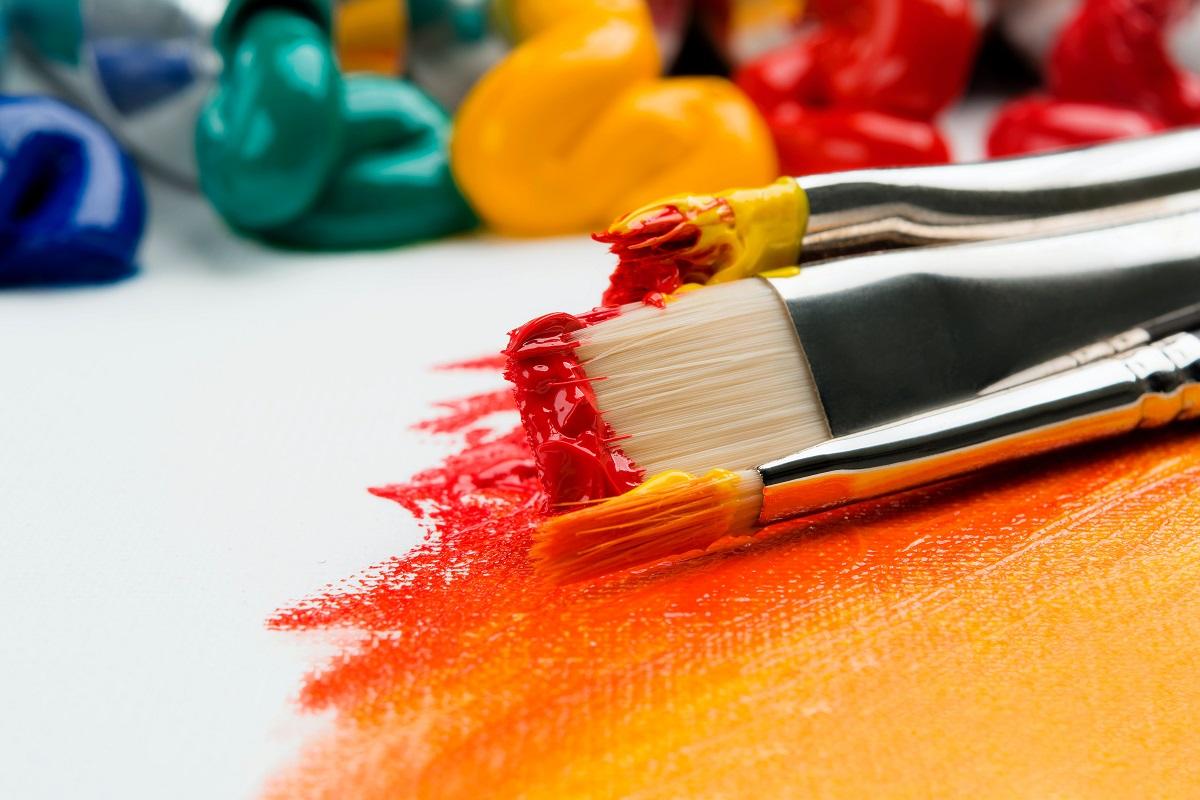
How Do External Elements Affect Acrylic Paint Drying Time?
To break things down further, acrylic paint goes through two drying stages. In the fast-drying stage, the paint has dried to an extent, whereby the soft film on the top is no longer susceptible to dilution by water.
But since it's not fully dried, the paint can succumb to external pressure. Some painters leave the paint to dry completely so that the entire mixture under the thin film dries to an even mass. This ensures that all the water evaporates from the formula and leaves behind the true color of the paint.
Here we have shortlisted the essential factors that impact the drying time of any acrylic gel.
1. Absorbent Surface
Do you know the difference between primed and unprimed canvas? Note that when painters apply gesso primer to a paper, they prime the canvas to increase the absorption properties of the surface. It's natural to find that the first paint layer will dry quickly compared to when you're coloring on existing layers of paint.
But unprimed paper is better at absorbing the paint than a canvas, and it's much like coloring over a paper towel. You'll find that the moisture from the paint will seep into the paper, which will leave you with less time for blending the colors.
There are special papers on the market suited for acrylic painting; however, professional painters add a solid layer of paint, to begin with. This ensures that the paper will absorb the moisture from the first layer, while all subsequent layers will appear more vibrant to deliver a unique finish.
2. Low Humidity
A large part of an acrylic paint's drying time will depend on the moisture content in the air, as high humidity will increase the drying time. This means you can expect your painting to dry faster on a less humid day.
If you live in an arid climate, we recommend painting indoors unless you like the challenge of racing against the clock. It would help to add retarders in such instances or use a wet palette to prevent the paint from drying fast.
When working inside, you'll be able to control the humidity by managing the temperature settings with heaters or air conditioners. While the air conditioning vents may remove humidity from the air, the former often comes with a humidifier to add moisture.
Also, different parts of the house have varying degrees of humidity, such as the basement, which is more humid than other rooms. Depending on your painting technique, you can try changing rooms, but remember that higher humidity may promote mold growth despite allowing a better blending of colors.
Acrylic artists even use a dehumidifier to lower the humidity in these moments.
3. Thickness
It's not rocket science that thicker layers take longer to dry than thin paint layers, and it all comes down to blending. Don't hold back while applying the different paint layers when you want to focus more on blending.
With a thicker coat, the water takes longer to evaporate, and you can choose between both open and heavy body acrylics to achieve a vibrant color gradient. On that note, we should mention that the size of the canvas determines if you can blend the paints in time.
This is because it's challenging to manage the colors on a bigger canvas, and some portions may dry before you know it. Professional painters use a blocking technique and allow the first paint layer to dry fast.
They can then conveniently paint over it by focusing on the finer details and ironing out the errors. So, the first layer should be thinner, and you can start painting the second layer without waiting for the former to dry completely, thanks to the gesso primer.
4. Temperature
When the temperature rises, the water in the paints evaporates quickly, and they dry out faster. That's why you shouldn't be painting outdoors, especially when it's hot, but if you have no other choice, use wet palettes. They keep the paint wet for longer and prevent cracks, and you can choose between large and small palettes depending on your requirements.
5. Application And Acrylic Paint Type
People wondering, "how long does acrylic paint take to dry?" should think about the paint type and their preferred application method. By type, we mean whether it's a thick or thin paint and if it has fast or slow drying mediums.
To apply these paints, you can use a brush, roller, or spray bottle, with the latter delivering an even coat to dry in under 30 minutes. You can apply another coat after an hour when rolling or brushing as they are much heavier techniques. In this case, it will take the paint longer to dry between two coats, and you need to wait for the previous layer to dry completely.
6. Circulation
We suggest working in areas with no draft to prevent acrylic paint from drying quickly. You can paint near an open window or sit near the air conditioning or heater. And if possible, try to keep the canvas away from the air circulated by ceiling fans.
Also, before venturing outdoors, check whether it's a windy day because you'll need to use wind blockers or sit behind an obstruction. We have found painting in the wind particularly tough since the canvas wobbles a lot, but we were able to paint in peace when sitting behind a wall.
In some cases, you may want the paint to dry faster, so use a glazing technique whereby it's possible to add transparent colors to previous paint layers. You can even use a hairdryer to dry the paint faster to add extra layers of glaze.
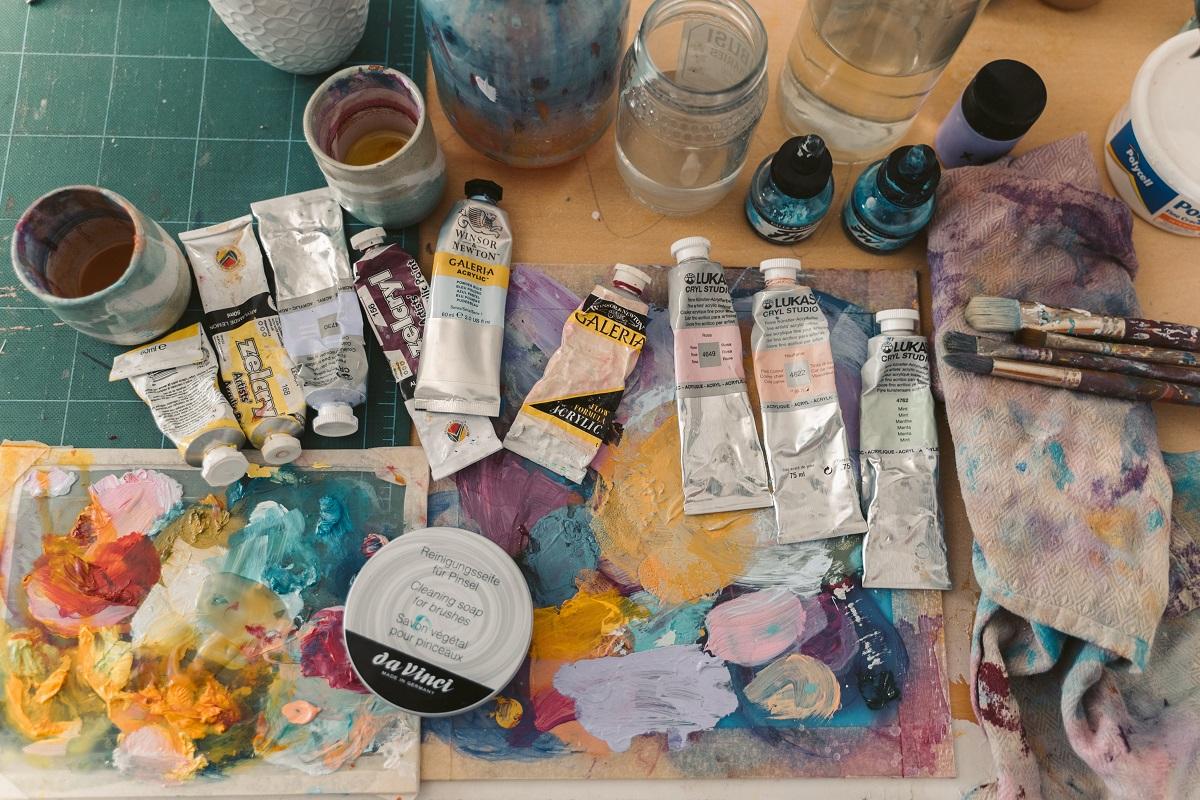
How Long Does Acrylic Paint Take To Dry On Different Surfaces?
To further help in your painting projects, we have narrowed down the drying time of acrylic paint on various surfaces.
1. Wood
When painting on wood, acrylic paint can dry to the touch within 20-30 minutes, but it takes between 6 and 12 hours for the paint to be fully cured. In humid weather, wood retains moisture longer, which increases the drying time, especially if you use more paint layers.
2. Metal
Metal takes longer to dry than wood, approximately 2 days, but you'll have to sand the surface to achieve a smooth texture before that. You may also need to apply a sealer and primer to waterproof outdoor paints.
3. Canvas
Canvas is the most common painting surface, and acrylic paint can dry to the touch in 10-20 minutes. These are for fast-drying formulas, while slow-drying paints on an unprimed canvas can remain wet for several hours.
4. Cardboard
Another surface that allows acrylic paint to dry quickly is cardboard, and the painting can be ready within a day. When fully dry, the cardboard will be flat, and for that, you should prime the material to seal the paint and prevent the water molecules from warping the surface.
5. Plastic
We have seen that acrylic paint takes 15-20 minutes to dry when you're painting on plastic. You'll have to apply varnish to seal the paint as it's difficult for the paint molecules to adhere to the smooth surface.
6. Fabric
It takes longer to paint on fabric, as acrylics require 3-4 days of drying time. It would be best to wash the fabric and dry it before you start painting so that the fast-drying formulas are set in 24 hours.
7. Glass
You'll have to be patient when painting on glass since the paint will require between 1 and 3 days to dry. Also, make sure to cure the glass and apply a primer for the best results.
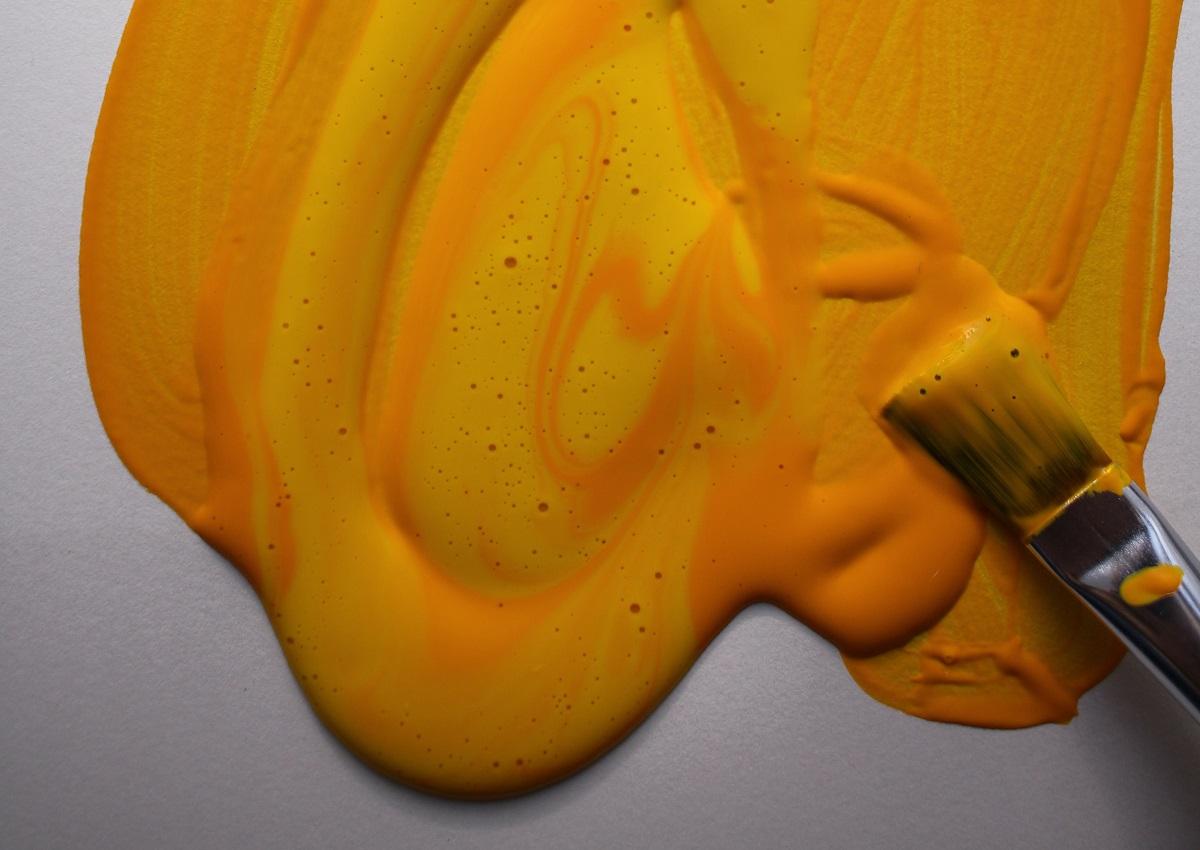
How Long Do Acrylic Paints Take To Dry Conclusion
That's all there is to know about using acrylic paint for your painting projects.
Hopefully, now you have a better idea of the drying time to plan accordingly. We have also highlighted how various external factors impact the quality of acrylic paint, so go over this guide whenever you fail to achieve the desired finish.
Maybe you forgot to factor in the temperature or humidity before painting outside or used the humidifier far longer than needed when working indoors. Thankfully, our guide will help you make all the right decisions going forward.
